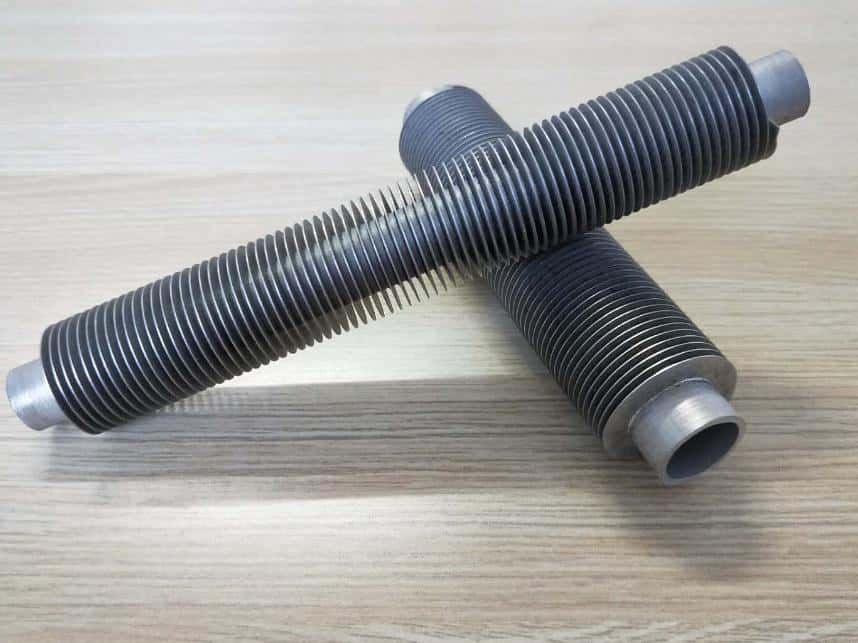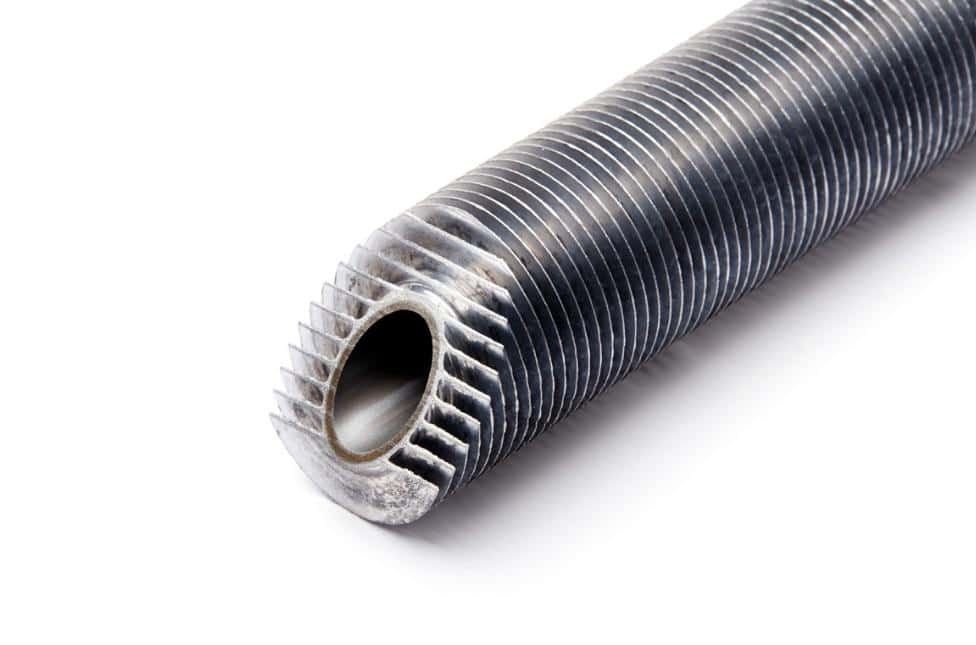Finned cooling tubes are used to improve heat transfer efficiency. Usually, fins are added to the surface of the heat transfer tubes to increase the outer surface area of the heat transfer tubes, thereby achieving the purpose of improving heat transfer efficiency. Such heat transfer tubes are called finned tubes.
The working principle of the finned tube radiator is to use the refrigerant to cool the air, or the heat medium to heat the air.
When heating is required, the finned tube radiator can use high temperature water, steam or high temperature heat transfer oil to heat the air.

When cooling is required, finned tube radiators can use low temperature water, such as chilled water, to cool the air.
In the process of inspection of laser welded finned tube, it is necessary to check whether there are deposits, coking, scales, etc.
At the same time, it is also necessary to check whether the bonding between each finned tube and the rubber gasket is tight, and whether the rubber gasket itself is intact, so as to avoid leakage caused by degumming and damage of the rubber gasket.
Double pipes should be buried for pile diameters of 0.6-0.8m; three pipes should be buried for pile diameters of 0.8-2.0m; four pipes should be buried for pile diameters above 2.0m, and three pipes can be buried for pile foundations according to the specific conditions of Chifeng Bridge.

The acoustic wave detection tube should adopt steel pipe, plastic pipe or steel corrugated pipe, and its inner diameter should be 50-60mm.
The joints of the detection tubes should be smoothly transitioned, the nozzles should be more than 100mm higher than the top of the pile, and the heights of the nozzles of each detection tube should be the same, the lower end of the tube should be closed, and the upper end should be covered.
The compression nut and the upper and lower guide rods of the laser welded finned tube should be lubricated frequently with lubricating grease.
Special personnel shall be responsible for the adjustment of each instrument, and the operating procedures shall be strictly followed for operation and maintenance.

Every time you re-press the finned tube, you must pay attention to the scale position when you pressed it last time, and don’t over-press the rubber gasket, so as to reduce the service life of the gasket.
Before the finned tube is tested on site, the delay time from the launch of the acoustic wave detector to the receiving system is determined.
And calculate the sound time correction value. When measuring, the transmitting and receiving probes should be raised and lowered synchronously at the same elevation or with a fixed height difference.
The measurement point distance is 40cm, and it will be re-densified to 20cm when abnormalities are found.
When replacing the rubber gasket of the finned tube, the section must be renewed to avoid uneven gaps between the sheets and affect the heat transfer effect.

The laser welded finned tube were selected for proper emission voltage and amplifier gain, and then kept constant during the test. Display and record the time history curve of the received signal in real time.
Combine multiple finned tubes with two as a detection profile, and complete the detection of multiple profiles respectively.
